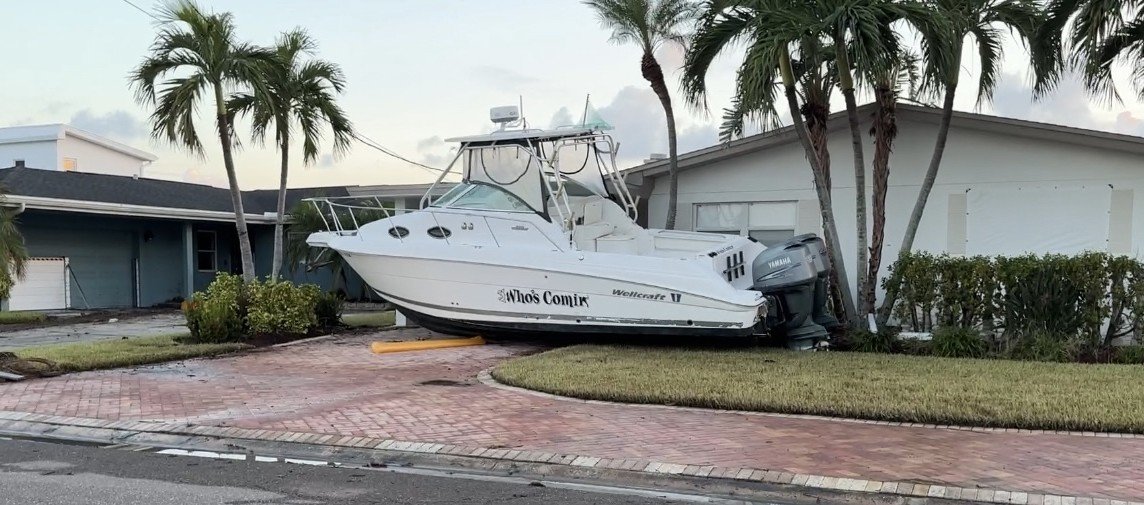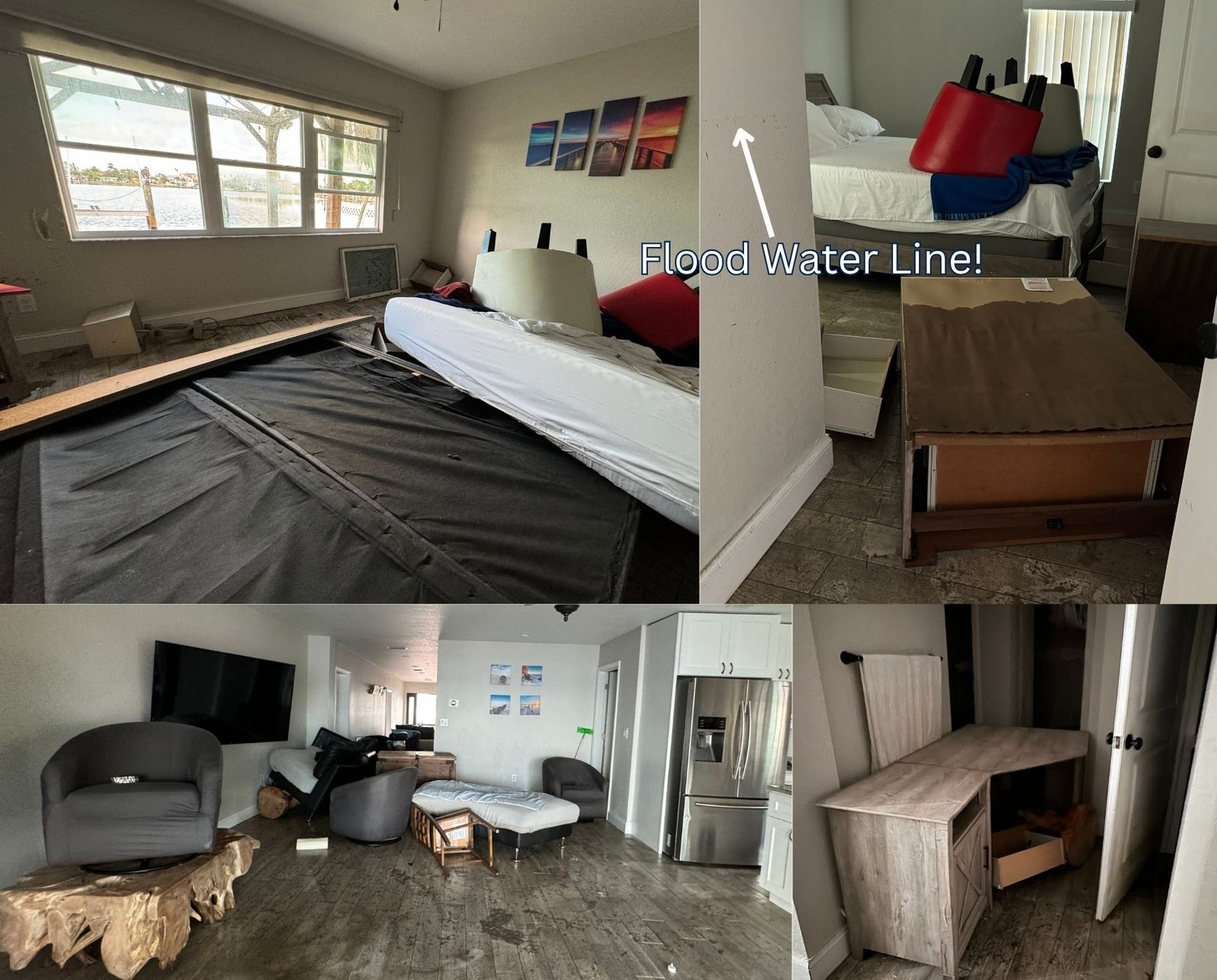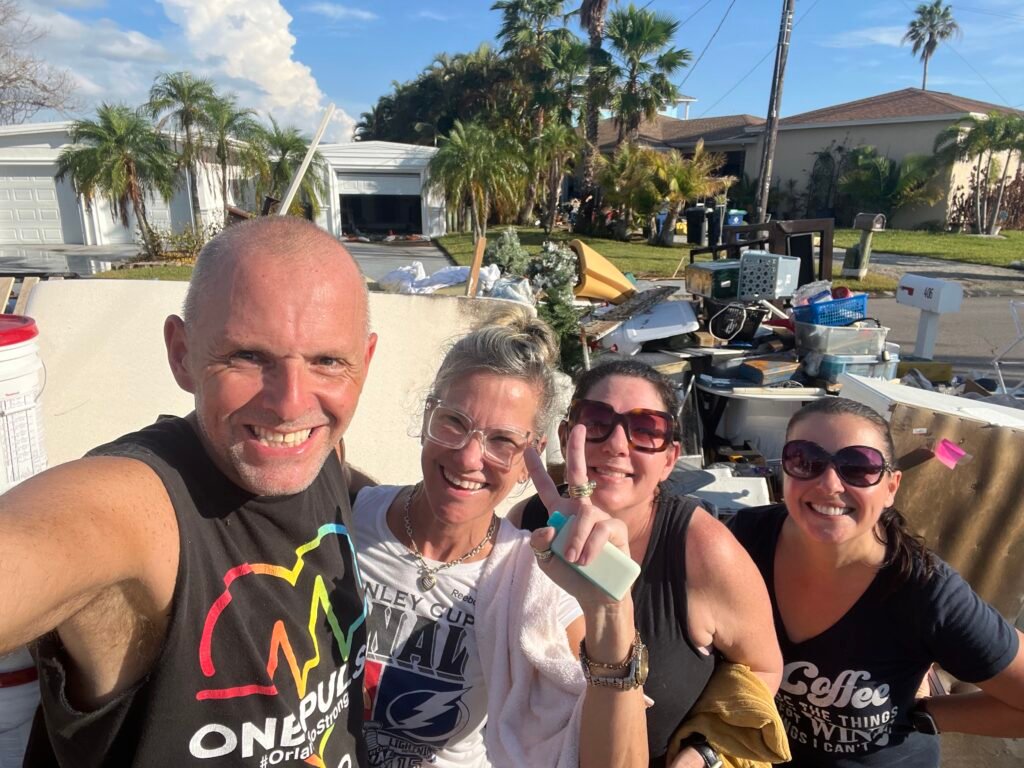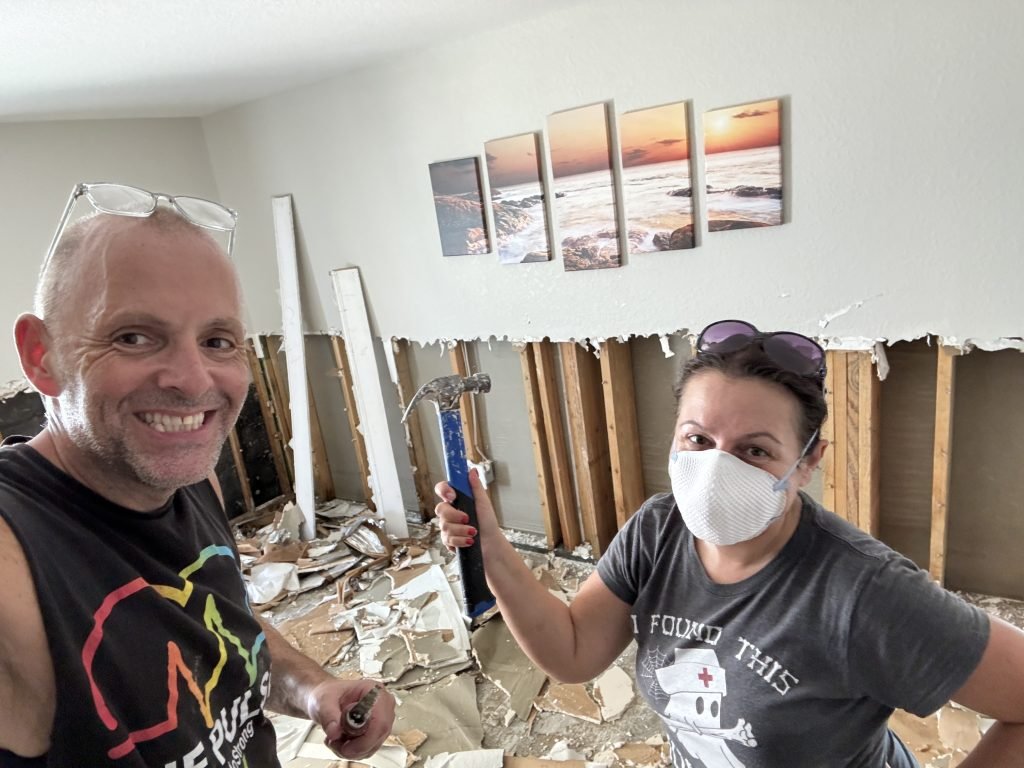
This footage of our backyard during the flooding is the last we have before the cameras cut out….the storm waters would continue to rise to more than double this height…..
“I’ve grown up in Florida with hurricane parties….as did my parents and grandparents. We never evacuated or worried, but I am so glad we evacuated this time. That’s the thing, you don’t realize how fast things can change until it happens to you, and then you don’t know what comes next until you’ve experienced it. We were shocked by how much information and misinformation, red tape and bureaucracies, and disaster profiteering we encountered.” ~Leslie
There is no real handbook for what to do when your home experiences a disaster. We’re creating this page to share what we learned so that others might not have to learn the hard way.
We live on a barrier island so we had to wait several days for the roads to be cleared (5 feet of sand on the main road!) and the bridges to be reopened in order to access our home after the storm. When we arrived we were shocked by what we saw. The top picture is the house right across the street from us (not their boat!) and the collage is what we found in our own home–the bedrooms a jumble, living room furniture piled in the front hall, desk in the bathroom….just like everything had been thrown in a washer and tossed around!
We knew we had our work cut out for us, but we had no idea how much or how long it would take. Hopefully, this page will help you avoid delays, mistakes, and confusion that we experienced.
Disclaimer: This page is purely based on our own experiences and opinions. Please do your own research before making any decisions, as we are not experts, just fellow homeowners who have gone through this.


The insurance company will be very backed up in a disaster situation. Get your claim in que as soon as you know you have a loss. We started as soon as we saw the water rising over our flood barriers on our ring cameras and were glad we did!
Don’t be afraid to follow up, but be prepared to be patient. It took weeks for our insurance agent to finally come to inspect our property. When you’re in the middle of a disaster, that feels like years!
Note: Flood insurance is separate from wind and other homeowner’s insurance (such as fire). You will need to file claims with your flood insurance company and your homeowner’s insurance company (if you have damage other than from flood waters). Flood insurance is capped at $250,000 (plus personal property, if included in your policy), no matter what policy or company you have. Homeowner’s insurance will have different limits and does not have a cap like flood does.
The first thing to do when you get back on the property is to document everything in your home. No detail is too tiny. Don’t forget each of the following items:



You will need to get all of the water damaged goods out of the house as soon as possible. The mold will grow amazingly quickly–we had rainbow-colored mold within days!

Choose Florida Steel Homes for strength, hurricane resistance, and lasting value for your dream home in the Sunshine State.
Got Questions? Reach out!
Copyright © 2025 Florida Steel Homes (a wholly owned subsidiary of Malbeth Investments LLC). All rights Reserved.